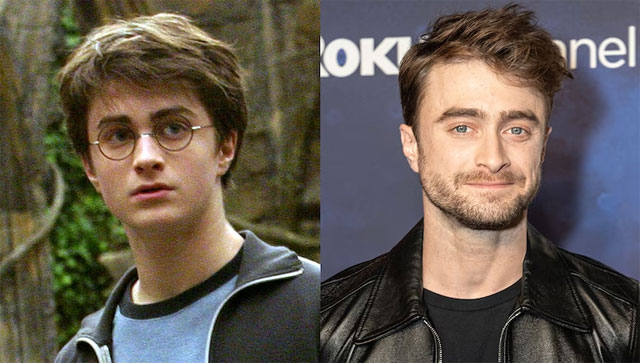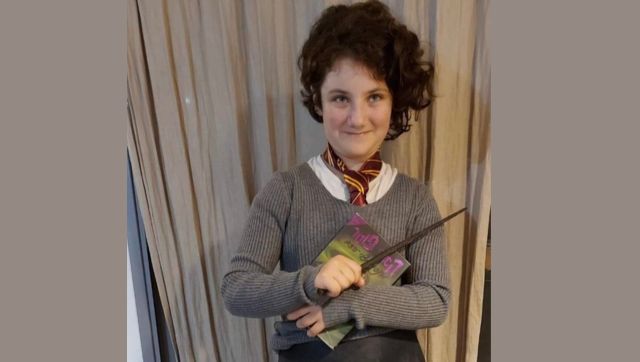On muggy summer afternoons in Kolkata, when even the crows fell quiet and the street dogs napped in whatever scrap of shade they could find, I would, in my head, be far away, romping through rocky coasts and magical forests in England, picnicking on potted meat sandwiches and crumpets with a dog named Buster and a parrot named Kiki.
Enid Blyton ruled my days and filled my nights with dreams of strawberries and cream, brownies and elves, and little cottages with honeysuckle over the door and primroses in the window.
When I went to England for the first time the disappointment was sharp even though my Enid Blyton days were long over. The crumpets were as dry as cardboard. Potted meat sandwiches were vile. The primrose was a rather plain flower.
But the ghost of that childhood fascination, those clotted cream dreams still remained. The sun had set on the British Empire, but in Blyton’s world it was still the eternal sunshine of the spotless kind. She was, in many ways, the last Queen of the old Empire.
Not that the old Empire was happy about it. The BBC had a ban on dramatising her works from the 1930s into the 1950s because the producers thought of her as a “tenacious second-rater,” dismissing it as a lot of “Pink-winky-Doodle-doodle Dum-dumm.”
Even though Blyton famously pooh-poohed all critics above the age of 12, over the years the chorus of criticism has only grown louder.
She’s sexist. The girls are girls and the boys are boys. The naughtiest girl was not so naughty. Bets is the crybaby of the Five Find-Outers, always the little sister. The Famous Five’s tomboy George is the exception that proves the rule. And she’s a girl who does not like being a girl anyway. She wants to be one of the boys. Surely if the stories had gone past puberty George would have been tamed.
She’s monocultural. At least Harry Potter’s Hogwarts had a few brown characters sprinkled around, some even with speaking parts. Blyton’s Malory Towers and St Clare’s were as lily-white and apple-cheeked as they could be. The only hint of “diversity” was the French teacher, the hapless spluttering Mam’zelle Dupont.
She’s racist and xenophobic. The little Black doll wants to be pink. Over 800 books and the only dark people are the golliwogs in Toyland – and they attack little Noddy in the dark woods. Blyton protested that she had more bad teddies than golliwogs but to no avail. She couldn’t quite wriggle out of lines like these:
“There isn’t a party,” said the golliwog in a very nasty story of voice. “This is a trap, Noddy. We want the car for ourselves. Get out at once!” … Three black faces suddenly appeared in the light of the car’s lamps, and three golliwogs came running to the car. In a trice they had hold of poor Noddy and pulled him right out of the car.
Documents discovered in the archives of her own publisher, Macmillan lambaste her for “an unattractive touch of old-fashioned xenophobia."
She’s a fraud. The enchanted fairyland her characters lived in had little resemblance to her real life, no hint of her bitter divorce, her emotional instability, her affairs, rumours about her bisexuality, her chilly relations with her own daughters one of whom described her as “without a trace of maternal instinct.”
She’s stuck in a time-warp. Her characters never really age, summer holiday after summer holiday. Their adventures have a bit of a recycled feel even in the titles — The Adventurous Four Again! Nothing “real” happens to them over the years. JK Rowling said that she wanted the hormones to kick in for Harry Potter and his crew. She didn’t want Harry to be stuck “in permanent pre-pubescence like poor Julian in the Famous Five!”
And most damningly, she’s insipid. Even back in 1949, the critics were already sneering at her describing her style as “aesthetic anaemia,” her vocabulary as limited, her stories as going only “so far in depicting reality.”
Continues on the next page
But that was the magic of the Faraway Tree. It was not real. We all knew it. That’s why it could belong just as easily to a little girl in Devonshire as well as a little boy in Kolkata. Children’s fiction has long become obsessed with depicting reality. Broken homes. Race relations. Adoption. Religious intolerance. Drugs. If it’s not about the pressing social issues of the day, it has to be educational – about history or inter-faith harmony or metaphysics. It has to teach something.
As an adult I was afraid Enid Blyton taught us all the wrong things. It colonised us into little brown sahibs. I worried that my niece in Kolkata was growing up on that same whitebread diet of Famous Five and Secret Seven, fantasising about Georgina and Larry and Pip and their honeysuckle lives that would really never be hers. I fretted she would internalise a world where the white kids got to save the day and the brown kids only got to read about them. I worried that Blyton lulled her into a fantasy about a world where everything always came out right in the end, the cops ala Mr “Clear Orf” Goon were more clownish than bullying, and if all else failed you could always hide out from the world in the hollow tree. I thought her Famous Five needed to be Jasmit, Dominic, Ayesha, Gauri and Tinku the dog.
But now I realise cultural representation doesn’t make the story, the adventure does. I didn’t read Enid Blyton because I wanted to be white. I didn’t read her because I wanted to escape a world of uncaring adults. I read her because the plucky children came out on top. I read her because long before there was Harry Potter she was writing about boarding schools, magic and secret societies with passwords. I read the Bengali detective stories of Satyajit Ray and loved the adventures of Goopy Gyne and Bagha Byne his grandfather wrote but Enid Blyton had some 800 books. She got to be there through our entire childhood, the toys of Toyland being replaced by the pixies, the pixies being replaced by the Find-Outers, the girls of St Clares growing up with us.
And that is why, hopelessly out of date as she might be in our multicultural chicken tikka masala times, as out of place as she might be in a Britain where rioters are running wild and David Cameron is ordering the use of water cannons, as riddled as her books are now with silverfish and political incorrectness, there is still a corner of our hearts that will always be Enid Blyton.
In that little corner Noddy’s little red and yellow car still goes parp-parp. Kiki the parrot says, “God save the King, Polly put the doctor on, send for the kettle. Pop goes Bill!” The Famous Five are having a wonderful time. And there’s always another mystery for Fatty and the gang to solve next hols. I don’t live in that world. But it still makes me smile.


)




)
)
)
)
)
)
)
)